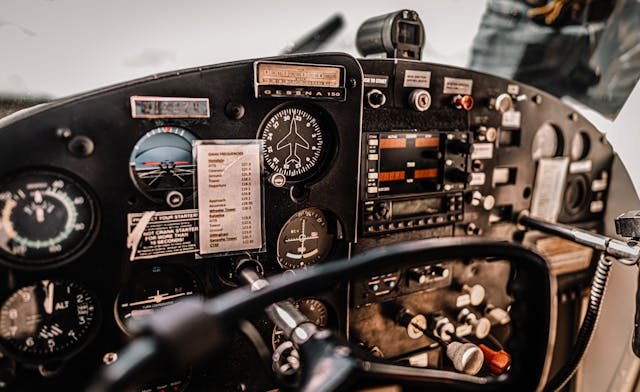Embarking on a journey in an aircraft necessitates prioritizing the safety and reliability of the flight. While acknowledging the importance of the pilot’s abilities, numerous unseen elements converge to ensure your safety in the air. Delving into the details of aviation reveals these unseen components that contribute to a safe and seamless flying experience.
1. Avionics Testing
Avionics testing, a crucial phase in the aerospace industry, aligns with the rigorous standards outlined by the AS6171 standard. Electronic systems that operate and monitor aircraft are referred to as avionics, and they are subjected to extensive testing in order to meet the strict standards set by AS6171. In order to guarantee optimal performance, this standard makes sure that crucial parts, including sensors, communication systems, and navigation instruments, meet certain standards. The aviation sector improves overall flight safety through extensive testing methods in accordance with the AS6171 for avionics components.
2. Maintenance Procedures and Protocols
The foundation of airplane safety is comprised of maintenance protocols and procedures, which are exact practices subject to stringent regulations. These thorough procedures include a variety of tasks, from standard inspections to in-depth analyses, guaranteeing that each aircraft goes through a number of inspections. The main goal is to find and fix possible problems before they endanger people’s safety. Respecting these maintenance protocols is essential for maintaining the dependability and integrity of aircraft systems as well as regulatory compliance. By giving passengers and industry stakeholders confidence that every aircraft is subjected to comprehensive checks and preventive measures, the dedication to strict maintenance practices significantly contributes to aviation safety, ultimately enhancing the overall safety and dependability of air travel.
3. Air Traffic Management Systems
Modern technologies are used by air traffic management systems to monitor and manage air traffic, enabling smooth communication between pilots and air traffic controllers. Through the prevention of possible conflicts and the optimization of airspace utilization, this cooperative approach makes air travel safer and more dependable for passengers and aviation stakeholders. Air traffic management systems control the safe and effective passage of aircraft, playing a crucial part in the meticulous coordination of airspace. These advanced systems direct airplanes along the best routes, ensuring their safe separation and giving pilots access to real-time information. Preventing collisions in midair and improving overall aviation safety are the main objectives.
4. Stringent Regulatory Oversight
A key feature of the aviation sector is strict regulatory control, which is represented by a vast regulatory web that puts safety and uniformity first. These rules, which are implemented worldwide by regulatory organizations, address every aspect of aviation, from pilot education to aircraft construction. Within the aviation ecosystem, this framework promotes a culture of safety and dependability by ensuring adherence to high standards and best practices. Regulatory agencies are essential because they oversee and enforce compliance, carry out inspections, and update standards frequently to take into account developments in industry practices and technology. In addition to safeguarding passenger safety, stringent oversight also benefits the aviation sector overall by boosting its reputation and reaffirming its commitment to maintaining the highest levels of operational performance and safety.
5. Comprehensive Training Programs
Aviation operations require extensive training programs that encompass everything from ground operators to flight crews. These programs are designed with care to ensure that all aviation participants, regardless of rank, have the necessary training and tools. The industry-wide focus on continual training and readiness-building exercises encourages a culture of safety and preparedness. Flight crew personnel get continual training to improve their skills and adapt to a range of in-flight situations. In contrast, ground crew members are trained to carry out their duties correctly, especially in emergencies. This comprehensive and proactive approach not only increases individual proficiency but also raises the overall safety and dependability of aircraft operations. The aviation sector shows its dedication to upholding high levels of competence and readiness in all facets of air travel by funding extensive training programs.
Conclusion
The pilot is the public face of flight safety, but the real power of air travel safety is the smooth integration of many unseen elements. Meticulous maintenance procedures assure the continued dependability of aircraft systems, while strict adherence to avionics testing guarantees the best possible performance of vital components. These factors work together harmoniously to raise the bar for aviation safety, which benefits stakeholders and travelers alike by fostering a safe and dependable aviation sector.
















